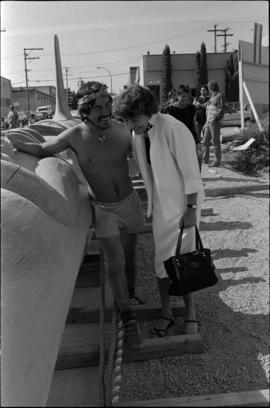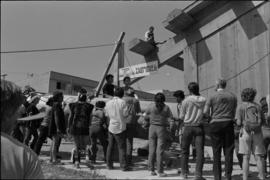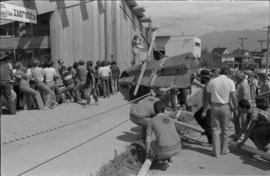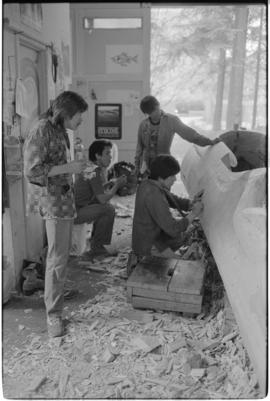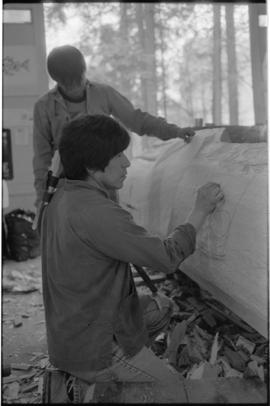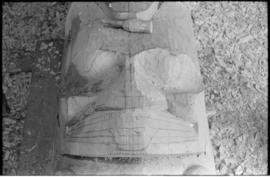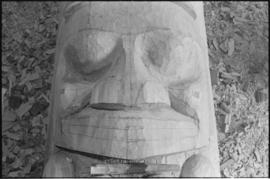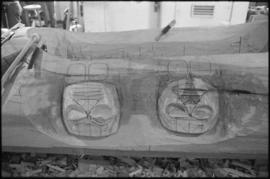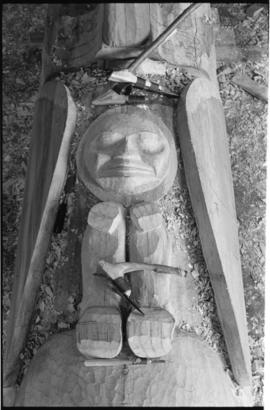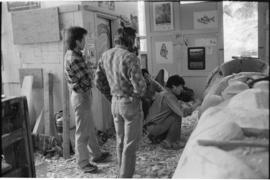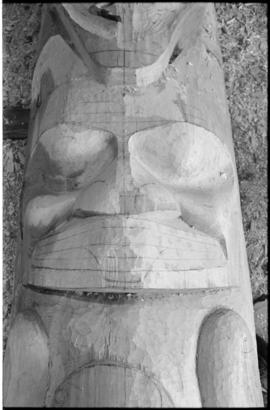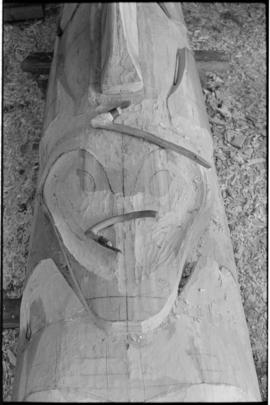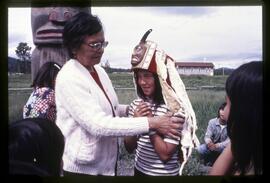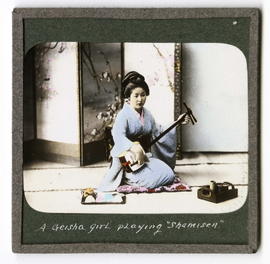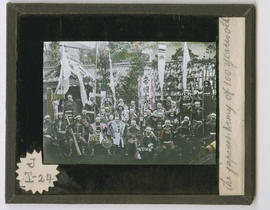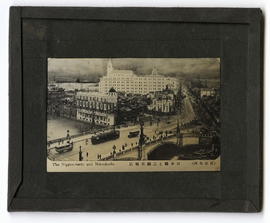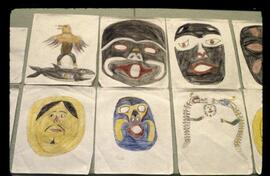Item is a b&w negative of a photograph of the continuation of the work on the pole. The photograph shows this second stage of doing rough cuts on the totem pole: getting the design on, plugging any damaged areas, making the first cuts, cutting all the figures, designing and cutting any add-on pieces, making the background uniform. This stage is hard manual labour, with the carvers using bigger adzes just to clear away a lot of wood. It should be noted that there’s no really easy delineation between these stages (Stage One = Rounding the pole; Stage Two = Roughing the pole) because some figures are worked ahead of others. But the change is signaled by switching from heavier tools (2-handed adzes and mallets) to smaller ones (single-handed adzes and curved knives. The textual info is in WHERE THE PEOPLE GATHER or paperback TOTEM POLE CARVING).
Geographic Location: UBC Carving Shed

